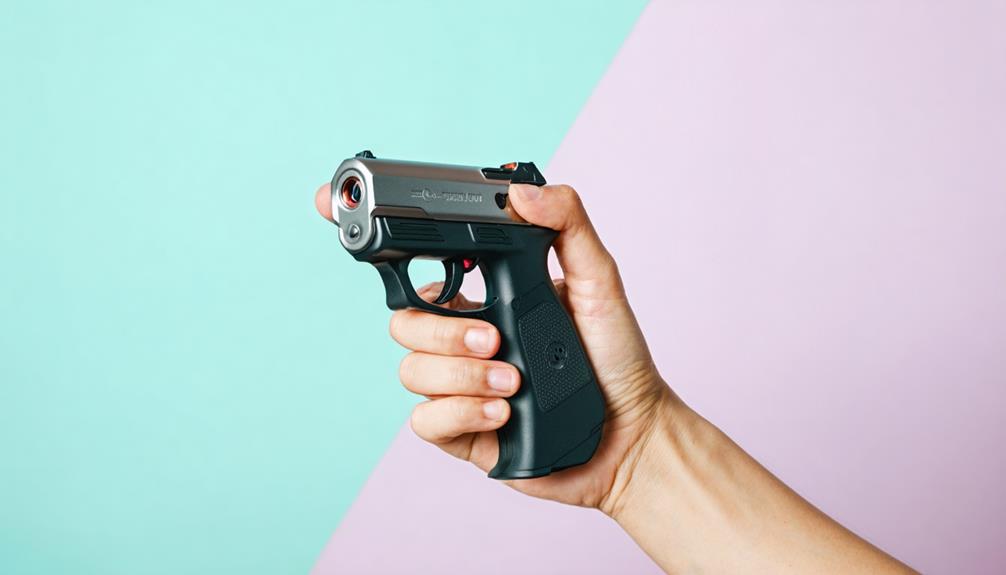
Brainstorm Security Shop

For Orders Over $199

On Any Of Our Products

Details On Refund Page
The growing interest in stun guns as a self-defense tool for women raises important questions about their practicality and effectiveness. As a non-lethal option, these devices offer a sense of empowerment, yet choosing the right model involves navigating a maze of features and legal considerations. The challenge lies in understanding how design and usability can impact a woman’s ability to respond under stress. Moreover, the evolving landscape of local legislation could influence the accessibility and legality of carrying such tools. What factors should women consider to ensure these devices truly enhance their personal safety?
Stun guns offer a multitude of benefits for women seeking personal protection and peace of mind. As a non-lethal self-defense tool, they empower women by providing a reliable means of safeguarding themselves in potentially dangerous situations.
One of the primary advantages of stun guns is their effectiveness in ensuring personal safety. These devices can incapacitate an attacker instantly, giving the user precious moments to escape from a threatening scenario. This feature is pivotal in crime prevention, as it deters potential assailants from targeting individuals who are prepared to defend themselves.
The compact size and ease of use of stun guns make them particularly appealing to women. They can be discreetly carried in a purse or pocket, ensuring that protection is always within reach.
Additionally, stun guns are designed to be intuitive, enabling users to operate them confidently under stress. The psychological impact of carrying a stun gun can also not be overlooked. Possessing a self-defense tool can significantly boost an individual’s confidence, knowing they have a means to protect themselves if necessary.
This confidence can be instrumental in crime prevention, as it reduces the likelihood of being perceived as a vulnerable target.
While the benefits of stun guns for personal protection are significant, it is important to understand the legal considerations surrounding their ownership and use. Legal requirements for possessing a stun gun vary significantly across jurisdictions, necessitating thorough research before acquisition.
In some areas, stun guns are classified similarly to firearms, requiring permits or registrations, while others may impose outright bans on civilian ownership. It is crucial to consult local laws to ensure compliance and avoid potential legal ramifications.
Self defense laws also play a pivotal role in determining the permissible use of stun guns. Generally, these laws dictate that the use of force in self-defense must be reasonable and proportional to the threat encountered.
Misuse or excessive force with a stun gun can result in criminal charges, even if used in a self-defense scenario. Familiarizing oneself with these legal principles is essential to ensure that, if faced with a threatening situation, the use of a stun gun is justified and lawful.
Selecting the right model of a stun gun is crucial for ensuring optimal personal protection and ease of use. With an array of model types available, it is essential to consider various factors to match individual needs and preferences.
The first step in choosing the right model involves understanding the different designs available. Compact models, such as those resembling lipstick or keychains, offer discreetness and portability, ideal for women who prioritize convenience without sacrificing security.
Alternatively, larger models may provide a firmer grip and increased power, appealing to those who prefer a more robust device.
Another critical consideration is the voltage level of the stun gun. Voltage levels can vary significantly between models, impacting the device’s effectiveness. Higher voltage stun guns deliver a more intense shock, potentially incapacitating an assailant more quickly.
However, it is important to balance voltage with personal comfort and confidence in handling the device. For many women, a moderate voltage level that ensures both efficacy and manageability may be the most suitable choice.
Ultimately, personal preferences, lifestyle, and specific safety concerns should guide the selection process. By carefully evaluating these factors, women can choose a stun gun model that enhances their personal security while aligning with their daily routines.
Proper usage and safety protocols are paramount when it comes to stun gun operation, ensuring the device serves its intended purpose effectively. To achieve this, understanding the best practices for carrying and deploying a stun gun is crucial. This includes familiarizing oneself with the stun gun’s features, such as the safety switch and activation button, and ensuring the device is regularly maintained and fully charged.
Situational awareness and the ability to assess when to use the device are also key components of safe operation.
Training resources are invaluable in achieving proficiency with a stun gun. Many manufacturers offer instructional manuals or online tutorials that provide step-by-step guidance on proper handling. Additionally, self-defense courses that include stun gun training can offer hands-on experience and increase confidence in using the device under stress.
These programs often cover legal considerations, helping users understand the boundaries of lawful use.
Moreover, practicing with a stun gun in a controlled environment can aid in developing the muscle memory necessary for quick and effective deployment.
In the realm of personal security, diversifying self-defense strategies is essential for comprehensive protection. While stun guns offer an immediate deterrent, integrating additional self-defense methods can significantly enhance personal safety. Self awareness training is a cornerstone of effective self-defense, enabling individuals to recognize potential threats early and react accordingly. Developing heightened situational awareness can prevent confrontations before they escalate, providing a proactive layer of defense.
To maximize safety, consider incorporating the following strategies alongside stun gun usage:
| Strategy | Description |
|---|---|
| Self Awareness Training | Enhances ability to detect and avoid potential threats. |
| Physical Fitness | Improves agility and strength, aiding in escape or defense maneuvers. |
| Safe Travel Practices | Plan routes, avoid isolated areas, and inform others of your whereabouts. |
| Verbal De-escalation | Utilize communication techniques to defuse potentially dangerous situations. |
| Emergency Contacts | Keep a list of important contacts easily accessible on your phone. |
These strategies, when combined with stun gun proficiency, provide a robust framework for personal safety. Training in self-awareness not only cultivates a vigilant mindset but also empowers women to navigate their environments with confidence. Continual learning and practice in these areas ensure a well-rounded approach to personal security, reducing vulnerability and increasing resilience in the face of potential threats.
The battery lifespan of a stun gun varies based on usage and model. Rechargeable options typically last between one to two years under regular use. Regular charging and maintenance can extend the lifespan, ensuring optimal performance and reliability.
Stun guns require routine maintenance to ensure optimal performance. Key aspects include regularly checking battery charge and inspecting for physical damage. Always adhere to stun gun safety protocols, and verify local stun gun legality to ensure compliance.
Using a stun gun in wet conditions is generally not recommended due to potential safety risks. Water can conduct electricity, potentially compromising stun gun safety and inadvertently affecting the user or others nearby. Always prioritize dry conditions.
Stun guns typically include warranty coverage, ensuring repair or replacement within a specified period. The product lifespan varies by manufacturer, influencing coverage duration. Prospective buyers should review warranty terms to understand protection levels and potential limitations.
Stun guns often feature activation indicators, such as noise or light signals, as part of their safety features. These indicators serve to notify users when the device is active, enhancing operational awareness and ensuring user safety.
